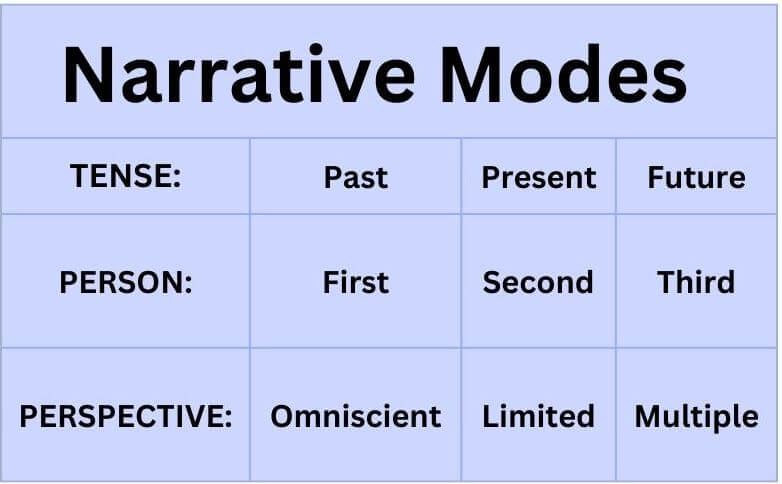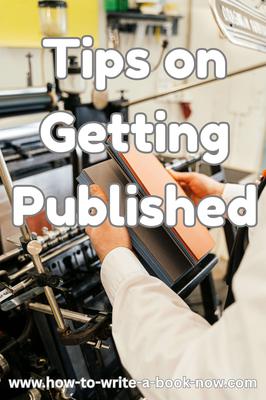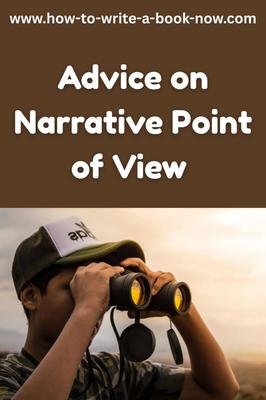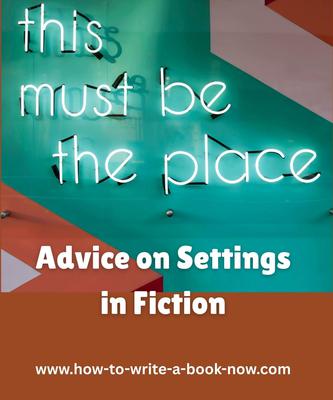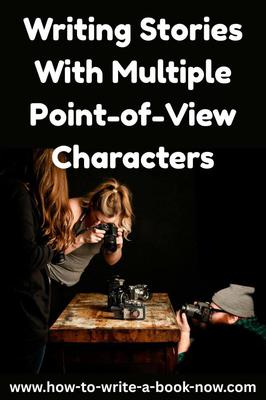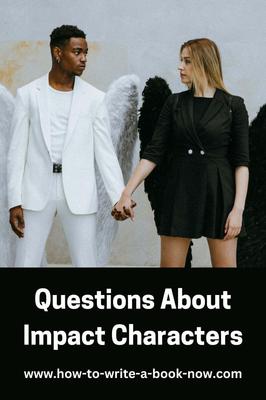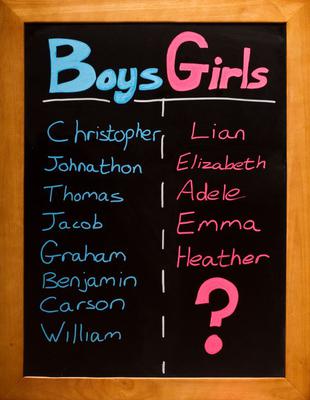Choosing Your Narrative Mode: Storytelling Perspectives and Options
By Glen C. Strathy
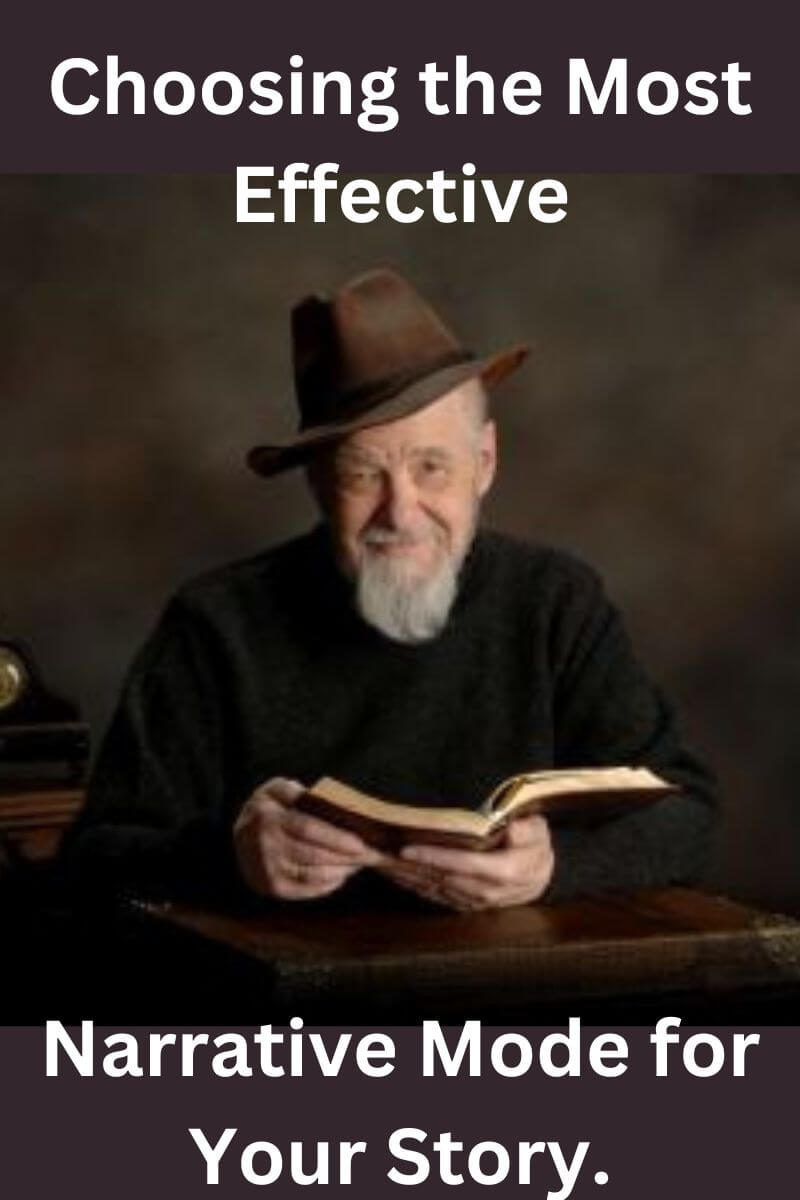
Choosing the right narrative mode for your story matters a great deal. It is a decision that determines the perspective or point-of-view from which your reader experiences the story, as well as the perspective the main character has on the story events. It establishes the relationship between the reader and the main character, and in many cases the relationship between the narrator, reader, and main character.
When we first start writing, we often choose a mode of narration that is similar to that of our favourite books. Because our brains have spent a good deal of time with that mode, it's familiar and comfortable.
However, just because your favourite author uses a particular mode doesn't mean it will be the best one for the book you're writing. If you take the time to consider other modes--or, even better, to try writing in several different modes--you may discover that another mode brings your story to life more powerfully. So lets look at some of your options.
On the most basic level, narrative mode can be categorized in three ways:
- By tense (past, present, or future). From the narrator's perspective, have the events of the story already happened (past)? Are they currently happening (present)? Or have they yet to happen (future)? This will determine which tense the majority of verbs will be in. Past and present tense are most common. Novels written in future tense are rare because it is more challenging to write in future tense for long periods, though there are always exceptions.
- By person (first or "I," second or "You," or third). Third person narration is most common, with first person running a close second. As with future tense, second person narration is rare because it is difficult to sustain for novel-length works, but can be done. Note that first person narration does not mean every sentence must be written in first person. But many will, and the reader will understand that a particular character is telling the story.
- By point of view (omniscient or limited).
Will you use an omniscient narrator who knows everything about the story, but is not a person in the story world? (In other words, are you the narrator?) Or will you tell the story from the perspective of one particular character in your story world? Perhaps you will tell the story from the perspective of several different characters who you alternate between.
Let's start with this last category because point of view is really the key to differentiating between all narrative modes.
A. Omniscient Perspective
Though it has fallen out of favour in recent decades, omniscient narration has been the standard narrative mode for most stories throughout history.
"Omniscient" literally means "all knowing," and omniscient narration involves writing from the perspective of a godlike entity who knows and perceives everything about the story but is not actually part of the story world. The omniscient narrator tells the story objectively and can change his focus from place to place, from character to character, as if he has access to multiple roving cameras and microphones throughout the story world.
You can think of the omniscient narrator as the voice of the writer. It is a mask of impersonality and authority the writer assumes when telling a story.
Features of Omniscient Narration
- Written in third person, usually in past tense but sometimes present or even future.
- Objectivity. The reader feels as though he or she is looking "at" the characters and events rather than being one of the characters in the story. It's as though the reader is "a fly on the wall."
- Gives the reader a broad perspective on the story because of the narrator's ability to go anywhere in the story world.
- Narrator is reliable. You can trust that the narrator knows what he's talking about and is honest in his account of the story. At any rate, the reader has no way of challenging or disagreeing with the narrator's account of events, since the entity that is relating the events is the same one that has conceived the events.
- Allows for dramatic irony. The reader can find out things that the main character does not, because the narrator can describe scenes for which the main character is absent or simply give the reader information the main character lacks.
Drawback to Omniscient Narration
- Impersonal. The reader feels less of a connection to any one character (such as the main character).
B. Limited Perspective
Most novels today are written in a narrative mode that is limited to one character's perspective. This point-of-view character is usually the one Dramatica calls the "main character," to distinguish it from the protagonist. The main character can be the protagonist, but it is also possible for the main character to be someone other than the protagonist. For instance, in The Great Gatsby, Gatsby is the protagonist (pursuing the goal of Daisy and all she represents) but the story is told from the point of view of Gatsby's neighbour, Nick, who is the main character.
Several narrative modes fall under the category of limited:
1. Third person, limited.
Third person, limited narration is similar to omniscient except that the narrator describes the story from the main character's point of view. The reader is only told what the main character knows or perceives, and is privy only to the main character's thoughts and feelings. Anything going on in the heads of other characters can only be inferred from what the main character perceives about them (their speech, actions, facial expressions, gestures, etc.).
Features of third person, limited, narration:
- Written in third person, usually in past tense but sometimes present or even future.
- Limited to the main character's point of view
- Creates a more intimate connection between the main character and the reader than with omniscient narration.
- No dramatic irony possible, since the reader cannot learn anything the main character does not think or perceive.
- Narrator is generally reliable. You can trust the narrator's account of what the main character perceives. (Of course, the main character can be lied to or misled by other characters, and can misinterpret things.)
Third person, limited, is in many ways the gold standard of narration, offering a middle-ground between omniscient and first person narrative modes.
2. First person, past tense.
First person narration is very common today. It's biggest advantage is how it dispenses with the narrator as the middle-man between the main character and the reader. In past tense, the main character tells his/her own story directly to the reader, who assumes the role of the main character's confidant. To the reader, this type of narration feels like sitting down privately with the main character as he or she tells you their life story.
Features of first person, past tense narration:
- Written in first person, past tense (obviously).
- Main character refers to him/herself as "I" and in some stories refers to the reader as "you."
- Limited (again, obviously) to what the main character chooses to tell the reader about his perceptions.
- Reader enjoys intimacy with the main character. The reader may even feel flattered that the main character trusts them enough to share so much personal information.
- Main character has had some time to reflect on the story's events (hence, past tense) and may have drawn insights from his/her experience.
- Narrator can be unreliable. The main character can mis-remember things, lie to the reader, omit details, misrepresent himself, spin events in different ways, etc.
- No dramatic irony, since the reader only learns what the main character chooses to tell them.
Drawback to first person, past tense:
- Reader can safely assume the main character survives the story, otherwise he wouldn't be alive to tell it. Of course, there are exceptions, such as when the main character is telling the story from beyond the grave, but these feel a little like cheating. Also, it might be possible, in future tense, to have a clairvoyant main character who is describing his future, but that would be quite unusual.
3. First person, present tense.
In this variation, the main character seems to be narrating events to him/herself as they happen. There is generally no illusion that the reader is the main character's confidant. The reader is not present in the main character's consciousness at all. (Well, I suppose you could write a story where the main character is sending his thoughts via technology to someone else, but that would be an unusual device.)
Features of first person, present tense narration:
- Written in first person, present tense.
- Limited to the main character's perceptions.
- Main character has had no opportunity to reflect on events, as they are happening now.
- Narrator is generally reliable. Since the main character seems to be speaking to himself, it is safe to assume he/she is not lying. However, the main character can misinterpret what he/she perceives.
- No dramatic irony. The reader only knows what the main character perceives.
- Highest degree of intimacy between the reader and main character. The reader automatically imagines himself as the main character.
C. Some Variations on Narrative Mode
Of course, writers have been experimenting with narrative modes for a very long time and have invented many variations on the basics. Here are are few to consider...
Character Narrators.
Character narrators can be seen as a variation on both first person and omniscient narrative modes. By "character narrator" I'm referring to stories that are told, not by the main character, but by a minor character in the story world -- often someone who plays no major role in the outcome of the story and is neither the protagonist nor main character.
Features of character narrators:
- Usually written in past tense. (Theoretically present tense is possible, but it would be challenging. Future tense would imply the narrator is some kind of prophet.)
- Written for the most part in third person, with forays into first person. It feels like omniscient narration most of the time, except that every now and then the character narrator will make his/her presence known by referring to himself as "I."
- On occasion, the character narrator will also appear to put the reader into the story world by referring to the reader as "you." Or the character narrator may be telling the story to another character in the story world, whose perspective the reader adopts.
- Narrator can be unreliable. Like a main character, the character narrator can lie to the reader, jump to false conclusions, misinterpret things, etc.
- Dramatic irony is not generally possible, however the reader may notice times when the narrator misinterprets events.
Drawbacks to character narrators:
- Unlike omniscient narration, the story is limited to what the character narrator can reasonably be expected to know, either because he was a witness to the events or because he has found out what happened by some other means (research, interviews, etc.).
- A character narrator usually cannot die part-way through the story, otherwise who will tell the ending?
Multiple Perspectives.
Some novels are told from the perspective of more than one character. In effect, this gives the novel multiple main characters, though not every POV character may get the same amount of development.
Sometimes there is one "true" main character whose decision determines the story's outcome while other point-of-view characters play lesser roles. Other stories try to have two or three POV characters play more balanced roles in the story.
In Romance novels, for example, it is common for both the main character and her love interest to be POV characters with roughly equal development.
Features of multiple perspective narration:
- Either third person, limited, or first person narration can be used, in either past or present tense.
- Can offer some of the advantages of omniscient narration (shifting perspective) along with the intimacy of limited narration.
- Dramatic irony is possible, because the reader can learn things from one character's perspective that another character may not know.
- Used often in romance to give the male lead's perspective.
Drawbacks to multiple perspective narration:
- The more point-of-view characters there are, the less connection the reader feels to any one character. Too many POV characters makes the story feel more like omniscient narration.
- The writer must take pains to make sure the reader always knows whose point-of-view they are in. (Rule of thumb: never switch points of view within a scene.)
Epistolary Novels.
These are novels written in the form of letters, or sometimes journals. Some of these novels consist of a series of letters or journal entries written by one character, or the entire novel may be one long letter. The mode is very close to first person, past tense narration, except that the letters or entries are often dated.
Other epistolary novels consist of a series of letters written by two or more characters, often to each other. This is one of the oldest ways to tell a story from multiple perspectives.
Stream of Consciousness.
Stream of consciousness is not the same as first person, present tense narration, although there are similarities. Both give the reader a lot of detail regarding what's going on in the main character's head. Both are about what's happening to the character in the present. However, first person, present tense, narration, gives one the sense that the POV character is telling the story, if only to themselves.
Stream of consciousness, on the other hand, feels as though a recording device has been hooked up to the main character's thoughts and perceptions. These thoughts and perceptions have a rawness to them, as though they are generated without conscious selection. There is far less attention paid to grammar or punctuation, and the character's mind is free to wander off-topic.
Stream-of-consciousness is used mostly in literary fiction and hardly ever in plot-driven, genre fiction.
Experimenting with Narrative Modes
To find the right narrative mode for your story, you might start by choosing one event from your plot. Write this event using whatever narrative mode feels natural.
Next, write the same event again, but this time choose a different narrative mode. The simplest way to do this is to write the scene from the point of view of a different character, or to switch from omniscient to limited narration (or vice versa). You can also choose to change the tense or the person.
Feel free to repeat this exercise several times.
Often you will discover that the narrative mode that feels right for your story is not the first one you chose. In fact, sometimes you might think you know who your main character will be, but doing this exercise shows you that another character is actually far more interesting, and that discovery changes the entire story.
You may also find that writing from other characters' points of view helps you get a better sense of who they are, how they think, and why they do what they do.

See also... Pros and Cons of First and Third Person Narration
- Home
- Writing Style
- Narrative Mode
